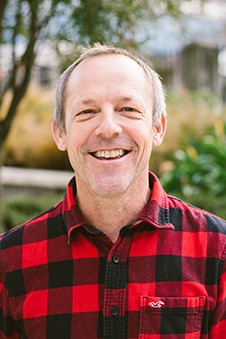Snow falling in Aotearoa/New Zealand's mountain regions is a major source of freshwater, but how much snow is being stored and how it's expected to contribute to future stream flows with our changing climate remains uncertain.
With the aim of improving water management models, the University of Otago is leading a new collaborative project that seeks to improve the modelling of seasonal snow and catchment processes.

Associate Professor Nicolas Cullen
The three-year project has received funding of $733,000 from the Deep South Challenge: Changing with our Climate, and will be led by Associate Professor Nicolas Cullen, in collaboration with Te Herenga Waka-Victoria University of Wellington and the National Institute of Water and Atmospheric Research.
Associate Professor Cullen, an expert in glacier-snow-climate interactions at the School of Geography, says understanding the nexus between climate and hydrology is of national importance for water management, and the New Zealand Water Model (NZWaM) is the primary instrument for the Deep South Challenge to support this kaupapa.
"Currently there is uncertainty of modelling seasonal snow distribution in alpine catchments, but importantly there is now an opportunity to improve the way it is represented within the NZWaM using advances in remote sensing technologies," Associate Professor Cullen says.
Co-leader of the project Dr Lauren Vargo, of Te Herenga Waka-Victoria University of Wellington Antarctic Research Centre, says the project is an opportunity to get a better understanding of how much snow is in the mountains here in New Zealand, using both measurements and models.
"By improving those models of snow for today, we'll also be able to learn about how snow and freshwater availability might change in the future," Dr Vargo says.
The project will leverage work already undertaken within Otago's Mountain Research Centre (MRC), which provides research expertise on mountain environments for stakeholders. This includes the work of Dr Pascal Sirguey using advances in remote sensing and high-resolution satellite photogrammetry to characterise and monitor cryosphere environments.
"The tools and methods we developed within MRC as part of the Matariki project to map snow depth at high spatial resolution from satellite stereo imagery will provide new fundamental insight about the accumulation and redistribution of snow across the Main Divide to inform model improvements," Dr Sirguey says.
Associate Professor Cullen points out one of the major challenges of running a national hydrological model in New Zealand is the diversity in local climate and physical landscape, which impacts the accumulation of seasonal snow.
"The high-quality observations produced by this project will help reduce model uncertainty, which will lead to more robust predictions of how much freshwater is available, where it has come from, and how it moves through alpine catchments in New Zealand."
Water resources are vital to New Zealand's economic and social wellbeing, and the project will also improve understanding of the climate processes governing the contribution of seasonal snow to the water cycle at both a catchment and national scale.
Associate Professor Cullen says a better understanding of the physical processes that control snow cover in our mountains will lead to improvements in the next generation of hydrological models, which will be crucial in our response to climate change.






